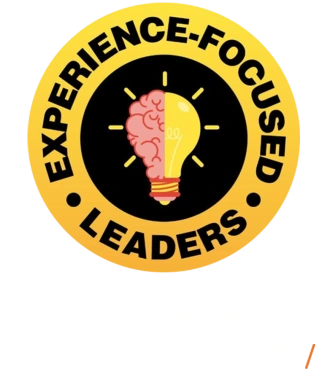Listen to the Podcast Episode on Your Favorite Platform

.svg.png)

Historical Perspective on Communication
.png)
I have often found that when I'm brought into an organization or I'm working with an individual and I'm told they have a communication issue, almost always they also have a leadership issue. (JD Schramm)
(00:00-07:47)
JD Schramm discusses how communication issues often mask underlying leadership problems. Effective communication is essential for leadership as it ensures that followers understand and support the leader's vision.
The conversation delves into the historical undervaluation of communication skills in leadership, contrasting this with the high standards set by leading tech companies in Silicon Valley like Google and Apple. JD Schramm emphasizes that today's leaders must excel in communication to inspire and mobilize their teams.
JD Schramm makes a compelling case for why clear and powerful communication is the most critical tool for leaders. He argues that even the best strategies and ideas will fail without the ability to communicate them effectively.
Drawing parallels to other fields, JD Schramm compares a leader's communication skills to a novelist who must share their work to make an impact. He highlights the importance of translating complex information into actionable insights for the audience.
Addressing the fear that flashy communication might lack substance, JD Schramm reassures that effective communication starts with solid content. He advocates for integrating storytelling and executive presence to enhance the delivery of valuable information.
.png)
Practical Application of the AIM Framework
.png)
And when I'm clear on my audience, my intent, then, and only then, can I create the message. If I create the message without tailoring it to the audience or tying it to the intent, that's where we have emails that we get and go. (JD Schramm)
(07:47-14:56)
Alex Shevelenko criticizes the rise of clickbait and superficial communication that lacks substance. JD Schramm agrees, emphasizing the need for deep, evidence-based communication that truly engages and informs the audience.
JD Schramm addresses the misconception that scientists and technical experts are inherently poor communicators. He believes that anyone can develop strong communication skills, regardless of their background. The key issue is that these professionals often lack the training and opportunities to practice communicating to broader audiences.
With just a few targeted sessions, individuals can see significant improvements in their communication abilities. Once they experience the positive impact of effective communication, they become more motivated to continue developing these skills.
JD Schramm introduces the AIM framework (Audience, Intent, Message) as a simple yet powerful tool for crafting effective communication. He explains the importance of understanding the audience, clarifying the intent of the communication, and tailoring the message accordingly. This framework helps ensure that communications are relevant, engaging, and action-oriented.
The speakers discuss practical examples of how to apply the AIM framework in various settings. By focusing on the audience's needs and motivations, defining clear objectives, and delivering a concise message, leaders can significantly improve their communication effectiveness.
.png)

How to Choose the Right Communication Channel
.png)
I love your phrase “The experience is the message”. I think that is really insightful and I really believe COVID did a great deal to reinforce that. Our experience of communication is a part of our experience of the message. (JD Schramm)
(14:56-23:23)
Alex Shevelenko and JD Schramm discuss the importance of selecting the appropriate communication channel. With the proliferation of channels—from email to text to video—it's crucial to tailor the delivery method to the audience's preferences and habits. JD Schramm emphasizes that the channel is a critical part of the message, as it can significantly impact how the message is received and interpreted.
JD Schramm highlights the necessity of understanding the audience's preferences when choosing a communication channel. He shares research showing generational differences in preferred communication methods, such as older audiences favoring phone calls and younger audiences preferring text messages. This insight underscores the need to customize communication strategies to match audience demographics.
Alex Shevelenko introduces the concept that "the experience is the message," stressing the importance of aligning the medium with the message's content and intent. For example, delivering an innovative message through an outdated medium can create a disconnect. JD Schramm agrees, noting that the overall experience of receiving a message, including the medium and context, shapes how the message is perceived.
JD Schramm discusses how to handle the complexity of communicating through multiple channels. He explains that it's essential to think about the experience for each channel, ensuring that it is as effective and engaging as possible. This might involve creating different versions of the same content tailored for various channels or deciding to focus on a single channel to maintain clarity and impact.
The speakers explore strategies for addressing multiple audiences with a single piece of content. They acknowledge the challenge of creating "monolithic" communications that don't cater to the specific needs of different audience segments. JD Schramm suggests using the AIM framework (Audience, Intent, Message) to segment audiences and customize content for each group, ensuring that all audience members receive the information they need in a format that works for them.
.png)
Communicating with Impact: Strategies for High-Stakes Presentations
(23:23-30:04)
JD Schramm speaks about identifying key decision-makers and their influencers. He suggests creating different presentation versions tailored to each group's needs. For example, decision-makers might need a concise executive summary, while influencers might require a detailed slide deck with background information. This approach ensures that each audience segment gets the information they need in a format that resonates with them.
The speakers discuss the challenge of conveying comprehensive information without overwhelming the audience. JD Schramm advises focusing on what the audience needs to know rather than showcasing all the work done. This shift from a creator-focused to an audience-focused mindset helps streamline communication and keeps the presentation relevant and engaging.
The conversation delves into high-stakes scenarios such as corporate strategy meetings, annual reports, and sales presentations. Alex Shevelenko points out that in these contexts, it's crucial to show thorough preparation and thoughtfulness without bombarding the audience with excessive details. Using a decision-tree approach or navigable content can help audience members find the information most relevant to them.
JD Schramm explains the value of using multiple communication channels to cater to different preferences. Whether it's a TikTok video, a PDF, or a printed book, the key is to think about how the audience prefers to receive information and to provide content accordingly. This multi-channel strategy ensures broader reach and better engagement.
To prevent overwhelming the audience, JD Schramm recommends being selective about what information to present and what to include in supplementary materials. This approach not only keeps the presentation focused but also respects the audience's time and attention span. The goal is to make the audience feel informed and valued, not inundated with unnecessary details.
.png)

Leveraging Technology and Personal Touch
.png)
I think the best AI-produced solution will only be made better if I'm able, as a leader, to put my imprint on it, personalize it, and tailor for my audience the pieces that they need to know. (JD Schramm)
(30:04-39:21)
The speakers highlight the limitations of linear, one-way communication, whether it’s through speeches, documents, or presentations. Schramm stresses the importance of creating opportunities for interaction, even in structured formats, to prevent the communication from becoming a monologue.
They discuss how offering choices and inviting the audience to "double-click" on topics of interest can enhance engagement. This approach allows for a more tailored and interactive experience, ensuring that the communication resonates with diverse audience segments.
JD Schramm underscores the need for thorough audience analysis. By understanding who the key decision-makers are and their influencers, communicators can prepare relevant content and anticipate questions. This preparation ensures that the most critical points are covered efficiently.
JD Schramm shares a tactic of sending timely, specific follow-ups after meetings. For instance, following up with a relevant link or timestamped video snippet can significantly enhance the message's impact. Quick, tailored responses show attentiveness and reinforce key points discussed during the meeting.
While AI can assist in generating initial content, JD Schramm emphasizes the importance of adding a personal touch. He suggests that leaders should customize AI-generated outputs to better connect with their audience. This combination of technology and human insight ensures that communication is both efficient and personalized.
Alex Shevelenko points out the need to make content easily accessible and scannable. Instead of overwhelming the audience with multiple PDFs and scattered information, he advocates for centralized, user-friendly formats that allow easy navigation. This reduces friction and enhances the audience’s experience.
The speakers acknowledge the challenge of balancing substantive information with the audience’s preference for quick, visual content. They discuss the importance of presenting essential details in an easily consumable format while still offering deeper insights for those who seek them.
In today's fast-paced digital environment, communicators need to be concise and clear to stand out. They discuss strategies for making messages competitive and engaging, even in a crowded information landscape.
.png)
Communicating Complex Ideas: Simplifying Without Dumbing Down
.png)
If we look at accessibility to our audience more than reduction of the nuance or dumbing things down, we will have more success with the people who are doing some really remarkable, innovative things. Some people would say that simplifying a complex idea is the hardest part about it. (JD Schramm)
(39:21-45:42)
JD Schramm emphasizes the importance of making scientific and technical information accessible without reducing its complexity. He suggests using analogies, patient stories, or visual aids to help the audience understand the core message without "dumbing it down."
Effective communication involves understanding the audience's needs and preferences. By considering what the audience wants to learn and how they prefer to receive information, communicators can make their messages more engaging and impactful.
JD Schramm recommends "Storytelling with Data" by Cole Nussbaumer Knaflic as an excellent resource for making data accessible and actionable. The book, along with its accompanying website and podcast, provides strategies for presenting data in a way that drives action.
Another recommended book is "Brief" by Joseph McCormack, which focuses on writing concise and clear communication. This resource is particularly useful for crafting brief yet effective emails and memos.
Before creating any visual content, clearly define your audience, intent, and message. This foundational step ensures that the content is tailored to the audience's needs.
Remove any unnecessary elements from slides or websites to make the core message stand out. JD Schramm draws an analogy to Coco Chanel’s advice on fashion: remove one accessory to focus on the essential. The same applies to visual design: simplicity enhances clarity.
Use descriptive and engaging headlines for slides and documents. Instead of generic topics like "Financials," use headlines that convey a clear message, such as "Financials Show Record Growth". This approach captures attention and communicates the main point effectively.
The speakers discuss the challenge of making complex ideas understandable while maintaining their depth and significance. They stress the importance of balancing detailed content with clear, accessible presentation to engage both informed and lay audiences.
While technology can aid in creating initial content, personalizing and tailoring the message to the audience's needs adds a valuable human touch. This combination ensures the communication is both efficient and impactful.
.png)

Inclusive Communication in Global Organizations
.png)
I am more authentic and effective if I'm able to fully bring myself to the conversation. So, as a leader, that's what I encourage people to do, to the level at which they're comfortable, and different people have different choices there. (JD Schramm)
(45:42-52:22)
Alex Shevelenko shares his experience leading a diverse team with members from different cultural backgrounds, including the Philippines, Ukraine, and Brazil. He highlights the importance of creating a welcoming environment that respects varied cultural nuances and values.
Leaders have to bring their full, authentic selves to conversations while being mindful of their audience’s diversity. JD Schramm stresses the balance between maintaining authenticity and ensuring the audience sees themselves represented in the content.
JD Schramm encourages leaders to share personal stories and experiences to build genuine connections. He mentions his own experiences, such as talking about his husband and family, to illustrate the importance of authenticity in leadership.
Leaders should use language, examples, and images that acknowledge and respect the diverse backgrounds of their audience. This approach helps make content relatable and inclusive without diluting its core message.
Understand the cultural, linguistic, and experiential backgrounds of your audience. Tailor your message to be accessible and relevant to different groups.
While it’s important to be inclusive, overdoing it can lead to inauthenticity. Strive to strike a balance where your message remains genuine and respectful.
Simple additions to your language can make a big difference. For example, adding “to all those celebrating” when wishing Merry Christmas acknowledges those who may not celebrate the holiday without excluding anyone.
In a world with multiple narratives, leaders often face the challenge of addressing misinformation. JD Schramm highlights the importance of confronting lies directly and tactfully, ensuring that communication remains truthful and credible.
.png)
Tackling Tough Conversations: Navigating Lies and Authenticity in Leadership
(52:22-59:34)
JD Schramm explains the importance of addressing lies directly and clearly without escalating the situation. He emphasizes evaluating the relationship with the person spreading the misinformation and the significance of the lie.
Consider the magnitude of the lie and the medium in which it is spread. Social media debates are often unproductive, so JD Schramm advises avoiding them in favor of more personal, direct communication when necessary.
JD Schramm shares his approach to authenticity, highlighting the value of bringing your full self to conversations. He recounts personal experiences, such as discussing his husband and family, to illustrate how authenticity strengthens communication.
Leaders should ensure their content is relatable and inclusive for a diverse audience without losing their authenticity. JD Schramm warns against overcompensating, which can lead to inauthenticity and diluted messages.
The speakers discuss the challenges of communicating with a global, diverse audience. They stress the importance of using inclusive language and examples that resonate with various cultural backgrounds.
Striking the right balance between inclusivity and authenticity is crucial. Over-indexing on diversity can harm the content’s integrity, while ignoring it can alienate parts of the audience.
Before sharing personal stories or controversial opinions, leaders should understand their motives. Are they sharing to open a dialogue, provide resources, or gain attention? Clear motives ensure meaningful and effective communication.
If a leader feels uncomfortable sharing certain information, it’s okay to wait until the moment feels right. Authenticity and comfort are essential for impactful communication.
JD Schramm invites listeners to visit his website, jdschramm.com, where they can sign up for his newsletter filled with communication tips and insights. He offers to be a resource for those seeking advice and guidance in communication.
.png)
Check the episode's Transcript (AI-generated) HERE.
Other Episodes

Godard Abel | CEO of G2
S 01 | Ep 6 Where You Go for Software: Reach Your Peak


Dean Stocker | CEO of Alteryx
S 01 | Ep 8 Turning Your Customers Into Your Biggest Champions


Peter Fader | Co-Founder of ThetaCLV
S 01 | Ep 10 Turning Your Marketing Into Dollars

Author

Experience-focused Leaders is the #1 Multimedia Podcast! We talk to senior business & tech leaders about the experiences that move forward organizations, customers and society at large. True to form, we mix audio, video, web and eBook formats to turn these authentic conversations into personalized nuggets you'll remember & use.



.png)
